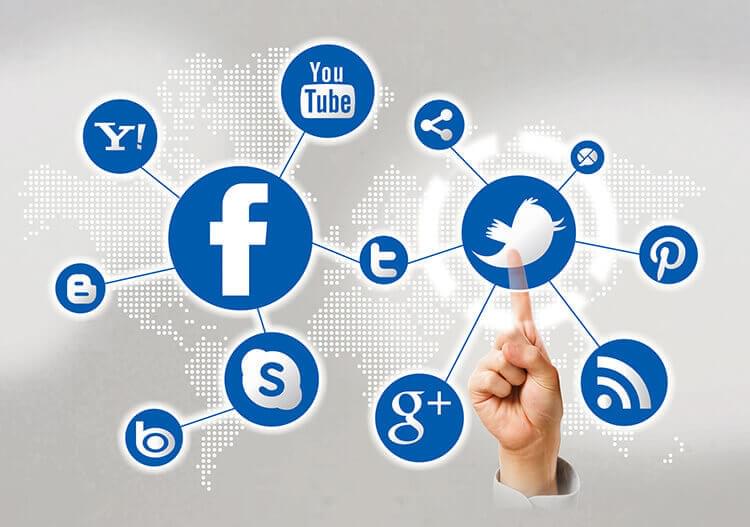Call centers aren’t new, and helpdesks have been around for a while. If you google ‘customer service agent’, or even ‘helpdesk agent’, practically all the image results will show stock photos of attractive service agents wearing headsets. Aside from their model-like looks (even the androgynous Keith Haring-esque service agent figurines look good) our most basic, probably old-school notion of customer support evokes the image of a phone. It’s not surprising since call centers have been around since the 60s.
Although telephony is gradually losing its dominance as the go-to channel for customer support -- its competitors being email, social media, mobile apps or web chat -- it’s still a default need of most customer service departments. And for good reason: certain kinds of information are presently best communicated using your voice. Some things are easier to speak than type and there’s a limit to how many fields we’re willing to fill in on a web form. For that reason, the helpdesk virtual call center isn’t going away anytime soon.
But not all helpdesks offer computer telephony integration equally. If you’re shopping for a helpdesk, and you need a virtual call center, here are the features you’ll want to look for to keep your department operating at the top of its phone game.
15 Features You Need in a Helpdesk Call Center
1. Single Click Dialing/Click-to-Call -- Customer service departments usually experience more inbound calls than they initiate outbound calls, but outbound calls are easier and faster when made through single clicks than dialing through a numpad. Helpdesks that either store customer numbers or access them through integration with your CRM can offer single-click dialing and save your agents seconds on every call -- which can translate to minutes each day, hours each week, and so forth.
2. Inbound/Outbound SMS -- A credible helpdesk call center should also be able to send and receive text messages. Outbound messages appear on customers’ phones as usual texts, and inbound messages appear as new tickets or updates to existing tickets. Helpdesks with SMS integration usually take it a step further with MMS integration -- which stands for multimedia messaging service -- so customers can send photos to clarify their support case or send emojis. (Hey, emojis are fun!)
3. Notifications -- While modern helpdesks offer a unified multi-channel inbox as well as integration with key business apps so users don’t need to switch screens, agents occasionally find themselves preoccupied when calls come in. The ability to set up notifications informing agents of incoming calls, missed calls, voicemails, calls forwarded, and SMS allows agents to stay on top of helpdesk activity when they’re unable to answer the phone.
4. Call Recording -- Helpdesk call centers usually allow call recording, which enables agents and managers to review the content of past calls, extract missed details from old tickets, and identify successful strategies for customer support. The recording is usually included either as part of the ticket or attached as a comment. Users scrolling through the case history would be able to access the recording as easily as agent notes or any other contextual data. You never know when you might need a record of a conversation.
5. Automatic Ticket Creation -- Many helpdesks are able to automatically create tickets from phone calls based on a variety of criteria, such as when agents accept incoming calls, when agents place outbound calls from the console, when callers leave a voicemail, when the console receives an inbound SMS message, and so on. Call details and the voicemail recording are attached to the ticket; if agents place an outbound call on existing tickets, the ticket is updated. This saves incremental amounts of time, but it adds up quickly. Calls from unknown numbers regarding an ongoing case may create a new ticket, but since virtually every helpdesk allows ticket merging, this is a non-issue.
6. Automatic Call Logging -- Helpdesk virtual call centers usually log inbound and outbound calls automatically. The log will take note of essential details such as the caller name (if available), the phone number, timestamp, and call status (if it was answered, missed, or went to voicemail). If the call is received, the log will note the name of the agent who received it. Depending on the helpdesk, additional details might be available, like the cost of the call or the call recording. Additional call and ticket management options would be available, like converting the call to a ticket if it wasn’t done already, or the option to call the customer back.
7. Add Notes During Call -- The helpdesk wouldn’t be much more useful than a browser-based VoIP solution if it didn’t also allow access to helpdesk functions while on a call. Modern helpdesks allow agents to add notes while on the phone with customers. This allows them to add contextual data without the need to go back and listen to the call recording. Agents can account for intangible information that wouldn’t be automatically logged, such as the customer’s mood, preferred language, and so forth.
8. Caller Context -- Helpdesks are able to give insight on individual contacts, particularly when the contacts are listed in a connected CRM. The helpdesk will provide context on inbound or outbound calls, like a customer’s purchase history, their status, how long they’ve been a customer, or the average value of their purchases. Caller contextual information typically pops up in a widget alongside the call.
9. Call Queue -- If all agents are occupied with service calls, subsequent callers can be informed they’re on a queue, and the number of calls ahead of them. They can also be informed their approximate wait time. Depending on the helpdesk, callers can be presented with other options such as requesting a callback or leaving a voicemail.
10. Interactive Voice Response (IVR) -- This is the menu callers hear when they dial your customer service department number. Callers are greeted with a message with numbered options to help them navigate your department, and allow the helpdesk to route their call appropriately. Most call centers and VoIP providers offer IVR and helpdesk call centers are no different -- a modern helpdesk will allow you to configure your IVR greeting and options out of the box.
11. Call Routing -- Call routing is an essential queue management tool that distributes calls to the next available agent. Call routing, sometimes referred to as automatic call distribution, is done according to various criteria, such as agent availability in general or by skill, the caller’s timezone, or whether the call queue is distributed evenly among agents (round robin). This also serves to prevent any agents from becoming unduly overworked.
12. Call Forwarding -- Agents who are unable to take calls at the helpdesk -- if a call is routed while they aren’t at their computer -- they can choose to have it forwarded to an external number, such as their cell phone. Helpdesks that enable this will also allow agent confirmation before the forwarding is completed, so the call doesn’t connect with the agent’s personal voicemail.
13. Warm Transfer -- A warm transfer refers to when a call center agent is speaking to a customer, and prior to transferring them, speaks with the new agent before the call is transferred. This allows the initial agent to inform the new agent of information pertinent to the case -- the nature and circumstances of the call -- or simply to give a heads up about the caller’s mood. Helpdesk call centers enable this functionality as well, so agents in different departments or with different skills can brief one another before the transfer is complete.
14. Business Hours -- Companies with customers in different timezones might be able fill call center roles in various time zones rather than restricting availability to a short range. In this case, some helpdesks allow admins to create call center business hours, which determine whether calls from different time zones outside the prescribed business hours go unanswered or whether they are routed to a call center with available agents and within the hours of operation.
15. Call Analytics & Reports -- Helpdesk call centers are able to provide insights on call center statistics, such as daily call volume, wait times, call length, time spent in IVR, number of voicemails, hourly call distribution, customer satisfaction and so on. The level of analytics may vary depending on the subscription tier of your helpdesk -- mid-level plans usually provide built-in reports and dashboards, upper-level plans may offer custom reports, while low-level plans might not provide a reporting functionality.
Call Features According to Helpdesk Providers
Certain helpdesks offer virtual call center functionality out of the box with a certain tier of subscription or through an extension available in their marketplace. These features may be overlaid on top of an existing VoIP provider’s functionality (such as Zendesk) or it may be an inhouse capability (such as Freshdesk). Other helpdesk solutions simply integrate with third-party call center solutions, as helpdesks recently did with Amazon Connect, which means while the helpdesk can provide a virtual call center, users would need to subscribe separately to the VoIP solution before accessing those features in their helpdesk.
Check the table below for virtual call center functionality according to leading helpdesks.
| Zoho Desk | Zendesk | HappyFox | Freshdesk | Desk.com | |
| Single Click Dialing | Yes** | Yes | Yes** | Yes | Yes** |
| SMS | Yes** | Yes* | Yes** | Yes** | Yes** |
| Multiple Numbers | Yes** | Yes* | Yes** | Yes* | Yes** |
| Notifications | Yes** | Yes | Yes** | Yes | Yes** |
| Queue Management (e.g. Business Hours) | Yes** | Yes | Yes** | Yes | Yes** |
| Automatic Ticket Creation | Yes** | Yes | Yes** | Yes | Yes** |
| Automatic Call Logging | Yes** | Yes | Yes** | Yes | Yes** |
| Add Notes During Call | Yes** | Yes | Yes** | Yes | Yes** |
| Voicemail | Yes** | Yes | Yes** | Yes | Yes** |
| Call Forwarding | Yes** | Yes | Yes** | Yes | Yes** |
| Call Recording | Yes** | Yes | Yes** | Yes | Yes** |
| Call Barging | Yes** | Yes* | Yes** | Yes* | Yes** |
| Caller Context | Yes** | Yes | Yes** | Yes | Yes** |
| Warm Transfer | Yes** | Yes* | Yes** | Yes* | Yes** |
| Manage Outbound Caller ID | Yes** | Yes* | Yes** | Yes* | Yes** |
| Call Analytics & Reports | Yes** | Yes* | Yes** | Yes* | Yes** |
| Interactive Voice Response | Yes** | Yes* | Yes** | Yes | Yes** |
| Integration with VoIP Providers | •Twilio •Avaya •Asterisk •Elastix •Amazon Connect | •Talkdesk •RingCentral •Five9 •Genesys •Amazon Connect | •Twilio | •Amazon Connect •Avaya •Asterisk •Cisco •Mitel •Talkdesk •Vonage | •8x8 •Avaya •Cisco •Genesys •RingCentral •Talkdesk •Shoretel •Vonage |
*Varies by Plan
**Available as add-on or integration
Looking for a helpdesk? For provider overviews, user reviews and head-to-head comparisons, check out our free helpdesk ticketing comparison guide.



